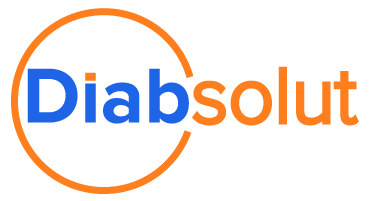Data-Driven Decisions: What it Takes to Align Your Customer and Business Needs
Author: Peter McMullan

Aligning and understanding your organization’s customer and business needs comes down to having the ability to collect and interpret the right data — and is absolutely critical if your goal is to improve your organization’s operations and the experience it offers customers.
Having a customer and business 360° view, or customer-centricity business model, are also terms that refer to collecting, organizing, and interpreting data in a way that allows for better visibility; helping to clarify the link between customers and operations.
This blog will delve further into the importance of aligning needs, and the basics of achieving alignment, and offer the next steps for your own organization to move towards data-driven decisions.
Why are Data-Driven Decisions and Aligning Needs Important?
Technology has given people access to more options, meaning organizations need to offer more in order to both attract and retain customers. Additionally, business as a whole is now being driven by the customer experience.
The more information an organization has to create an ideal customer experience — and the better they’re able to align customer and business needs — the more successful and sustainable that organization will become.
- This is difficult to do if you don’t know exactly what a customer wants, or lack the ability to pinpoint how different parts of your business relate to and impact each other.
In other words, if you’re unable to define and understand what’s going on with your business and customers, it’s difficult to draw a line from point a to b — to either resolve issues or find and take advantage of opportunities, such as:
- Understanding what is going wrong or right; and exactly when, where, and why it’s happening.
- Responding to customers in a targeted way.
- Adapting services and processes to better meet customer needs.
- Identifying and addressing areas that are inefficient.
The Basics
To achieve any goal, including aligning customer and business needs or gaining a 360° view of your business, it helps to take a look at where your organization is currently.
- Can you easily define your organization’s values and exactly what your day-to-day operations are?
- Can you break down day-to-day operations for each role and individual?
- Who are your customers and what customers should you be targeting?
- Are you able to identify and meet each individual customer’s needs?
- When looking at both customer demands and business goals, where are there opportunities to improve?
- Where is there overlap?
It also helps to take a look at common roadblocks that get in the way of aligning needs.
- How connected are your current systems, including your CRM, ERP, revenue management, service and dispatch, asset management, 3rd-party or contractor management, etc.
- How up-to-date are they?
- Are they capable of scaling in order to grow with your business?
- Is your organization currently using unintegrated methods of communication or data management (e.g., email, mobile devices, spreadsheets)?
- How many manual processes are involved with operations and customer support
- How many manual processes does your business rely on overall?
- How easy is it for your organization to track resources, time, spending, compliance, contract information, points of customer contact, etc.?
- Is this information accurate and well-maintained for traceability?
If you’re reading these questions and feeling unsure of where to start, remember that aligning needs comes down to collecting data, managing it, and analyzing it in the right way — the first set of questions above comes back to the second set of questions, so make sure:
- Your organization has the right tools to collect, centralize, and interpret data.
- All tools and systems work well together and can scale to fit your business and customer needs.
- Those tools and systems are set up to support end-users; reduce manual processes, and increase automation.
- To get outside help for direction if needed.
How to Start Building Your Own Organization’s 360° View
Our advice to organizations looking to align needs and have better organizational visibility is to look into a solution that can serve as a platform. Salesforce is all about smart data collection and data-driven decision-making. They have their own systems to support different areas of a business, but they also work well with a lot of leading 3rd party technology vendors (e.g., Certinia, ServiceMax).
Again, if you’re unsure of where to start, we’re here to help and can support your business with advisory services or an organizational health check, as well as technical services.
Looking for more information on extending the Salesforce platform to better align customer and business needs?
- Watch our latest webinar, featuring a solution for asset-centric service organizations.
- Contact us to learn more about The Rolling Warehouse™ and find the right solution for your
- Or read our success stories, featuring Salesforce and Certinia-powered solutions.
Search
Trending Topics
- E18: Click FSE Migration to Salesforce Field Service – Java With Sugar Podcast
- E17: The Process of Migrating from a Product That Is Retiring – Java With Sugar Podcast
- E16: Decoding FSE’s End-of-Life and Common Migration Practices – Java With Sugar Podcast
- A Dual Approach to Efficiency in Field Service Management: Asset-Centric vs. Customer-Centric Models
- E15: Trends and Limitations in AI – Java With Sugar Podcast
- Enhancing Field Service Operations with SFS-X
- E14: Our Point of View and Insights on AI – Java With Sugar Podcast
- E13: What Is Artificial Intelligence and Why Is It Beneficial for You? – Java With Sugar Podcast
- AI Ethics: What Is It and Why Does It Matter?
- 3 Tips to Improve Your Strategy and ROI When Selecting SaaS Solutions
